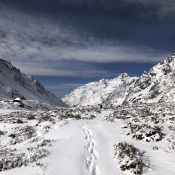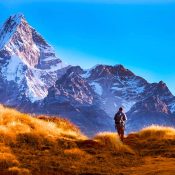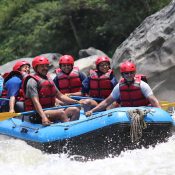How to Prepare for Trekking in Nepal: Gear, Fitness and Mindset

How to Prepare for Trekking in Nepal: Gear, Fitness and Mindset
Trekking in Nepal is a dream for many adventure lovers. The Himalayas are not only breathtaking but also physically demanding. Whether you are planning to conquer the Everest Base Camp trail, explore the Annapurna Circuit or enjoy a short hike in Langtang, preparation is key. Knowing how to prepare for trekking in Nepal can make the difference between an unforgettable journey and a difficult struggle.

1. Get the Right Gear for Trekking in Nepal
Your gear will carry you through every step of the journey. The weather in the Himalayas changes quickly, so packing wisely is essential.
- Footwear: A sturdy pair of broken-in hiking boots is a must. Do not bring brand-new boots straight to the mountains. Blisters can end a trek faster than altitude sickness.
- Clothing: Dress in layers. A moisture-wicking base layer, a warm fleece and a waterproof jacket should always be in your pack.
- Backpack: Choose a comfortable backpack with proper support. If you hire a porter, keep a small daypack for water, snacks and essentials.
- Accessories: Sunglasses, trekking poles, gloves and a warm hat are simple items that make a big difference.
Pro tip: Always carry a headlamp. Power cuts in mountain villages are common and walking to a toilet at night without light is never fun.
2. Build Fitness Before Your Trek
The trails in Nepal are not technical, but they are long and steep. Training your body beforehand will help you enjoy the views instead of fighting exhaustion.
- Cardio Training: Running, swimming, and cycling improve stamina. Aim for at least 30 minutes of cardio four to five times a week.
- Strength Training: Squats, lunges and step-ups prepare your legs for uphill climbs.
- Practice Hikes: If possible, do weekend hikes with a loaded backpack. This conditions your body to handle both the weight and the terrain.
Remember, trekking is about endurance, not speed. A slow steady pace will take you much further than racing ahead.
3. Prepare Your Mindset for Nepal’s Trails
Trekking in Nepal is as much a mental challenge as it is physical. You will face altitude, unpredictable weather and basic living conditions.
- Stay Positive: Some days will be tough. Rain may soak your clothes or altitude may slow your steps. Keep your focus on the incredible experience not the discomfort.
- Be Flexible: Flight delays, changing itineraries and sudden storms are part of Himalayan life. Treat them as part of the adventure.
- Respect the Culture: Trekking in Nepal means walking through villages, not just mountains. Learn a few Nepali greetings and show kindness to locals. A simple “Namaste” goes a long way.
One trekker once shared that the hardest day of the Annapurna Circuit was when snow blocked the trail. Instead of frustration, the group laughed, played cards in a tea house and called it the highlight of the trip. Your mindset will shape your story.
4. Health and Safety Preparation
Altitude sickness can affect anyone, even experienced trekkers. Knowing how to prepare for trekking in Nepal includes learning about health safety.
- Drink plenty of water and avoid alcohol at high altitude.
- Ascend gradually and take rest days when needed.
- Carry a small first-aid kit with medicines for headaches, stomach issues and blisters.
- Consider travel insurance that covers high-altitude trekking
Final Thoughts on How to Prepare for Trekking in Nepal: Be Ready, Be Open
If you are wondering how to prepare for trekking in Nepal, remember it comes down to balance. Pack the right gear, train your body and strengthen your mindset. The Himalayas are not just mountains, they are life-changing teachers. When you prepare well, every sunrise over snowy peaks feels like a personal reward.
Trekking in Nepal will test you, but it will also transform you.
All Categories
Quick booking process
+977-9803633878




